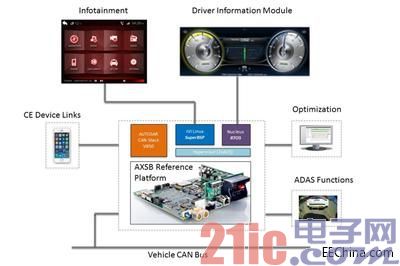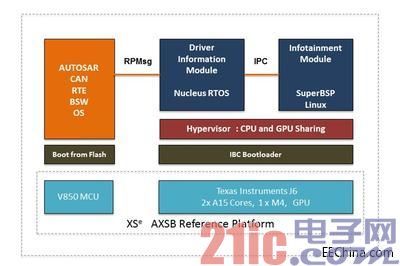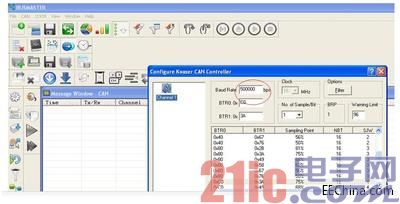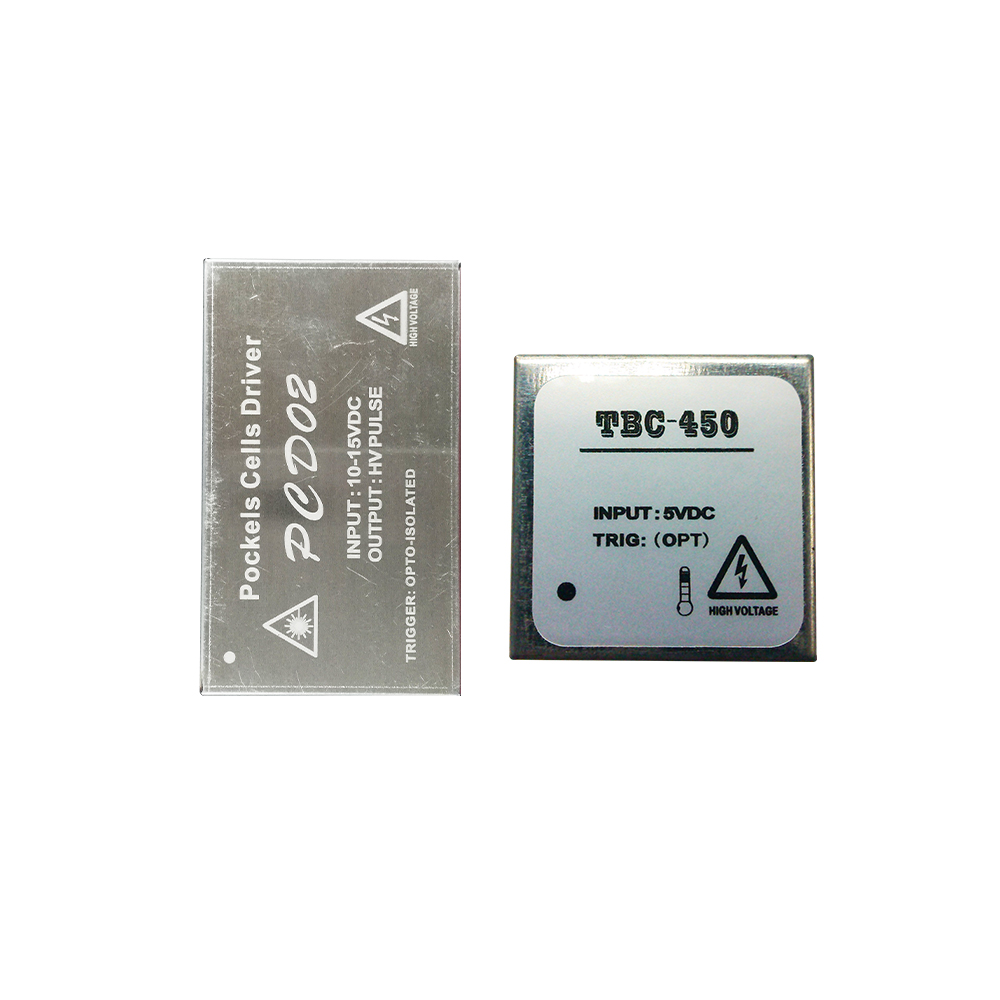It is now more difficult for automakers to succeed in three areas of innovation, lower parts costs, and rapid market introduction. Both drivers and passengers expect the functionality of smartphones and tablets to become part of the in-car electronic system. This article refers to the address: http:// In recent years, some of the functions originally introduced as high-end and top-of-the-line have been reduced, and more and more models are equipped with these functions. There is a new trend for competing car brand manufacturers to use the same technology -- such as the GENIVI Linux platform for infotainment systems. But the demand for innovation and OEM (original equipment manufacturer brand) differentiation to attract and retain customers remains strong. The combination of proprietary, internally developed embedded software and open source packages is an increasingly sought after solution. The "proof of concept" reference platform developed by Mentor Graphics provides the flexibility to tailor the design to provide the functionality required by the customer in a secure, automotive-grade code package. This special platform can be designed according to current market trends, including: Driver Information Module (DIM); automotive infotainment; smart phone and tablet integration; advanced driver assistance system (ADAS) capabilities; working with existing in-vehicle networks Communication capabilities based on the AUTOSAR standard. The integration of this technology was achieved by introducing a Type-1 embedded hypervisor on an automotive hardware reference platform, in this case using the automotive grade of XS Embedded GmbH (XSe), recently acquired by Mentor Graphics. AXSB. The design faces several challenges, including maintaining acceptable performance for each running application, sharing available hardware resources, and managing secure inter-domain communications. Meet the conceptual requirements As a powerful multitasking operating system, Linux has gradually become accepted by automakers. It can run high-end graphical automotive applications and support a variety of peripherals such as cameras, USB devices, audio and multimedia devices. Driver Information Modules (DIMs), vehicle alarm systems, and controls are less demanding on computing resources, but still require performance and a stable display to display important safety status information. To implement these features, a secure real-time operating system (RTOS) is ideal. Information obtained by the Vehicle Control Area Network (CAN), FlexRay or other network can be provided to the real-time operating system. The design requirement is to integrate the two independent operating systems (Linux and RTOS) and running applications onto a hardware reference platform, and to implement CAN (Vehicle Control Area Network) communication with the AUTOSAR 4.0.3 standard interface (Figure 1). . It is a fact that vehicle designers must integrate consumer electronics devices, and more than 95% of the market meets this need by providing support for Apple iOS and Google Android devices. Other standards are emerging in this space, and Mentor's proof-of-concept platforms include MirrorLink support, Apple CarPlay, and Google Android Auto. Reduce factor costs and achieve hardware integration by selecting a multi-core reference platform. This reduces the number of vehicle components and the associated costs of electronic harness design. The XSe AXSB platform is powered by Texas Instruments J6 multi-core CPU (Central Processing Unit and Renesas V850 MCU (Microprogram Controller). AXSB also includes many Ethernet (ethernet), serial / Numerous supporting peripheral components such as USB, radio tuner, reversing camera input circuit and CAN transceiver. A Yocto-based and GENIVI-compliant Linux distribution has been highly optimized for this platform for fast booting. Linux components (such as audio management and graphics management) have been "hardened." Improved memory components and boot loader allow the Linux operating system to function in less than two seconds, meeting car manufacturers' infotainment And navigation system requirements. Mentor Graphics' Nucleus RTOS (Real Time Operating System) is selected as the operating system of the Driver Information Module (DIM) because it uses less resources and starts up faster. The operating system is highly configurable and has a standard interface Open GLES2 for popular driver information module (DIM) graphics support applications. Stable communication using Remote Protocol Messaging (RPMsg) allows the Driver Information Module (DIM) software stack to deliver real-time data to the infotainment system and the AUTOSAR software stack. Consumer electronics integration What automakers can't escape now is the need to support devices based on Apple's iOS and Google Android-based systems. Often smartphone and tablet manufacturers have innovation cycles of less than a year, so there is a need for a generally supported method of connecting these devices and in-vehicle electronic systems, and this method can be used throughout the life of the vehicle. Early systems used Bluetooth, but Bluetooth technology did not have the bandwidth for multimedia integration, nor did it support video streaming for rear seat entertainment. USB is a well-established connection method, and Wi-Fi (wireless network) in-vehicle links are gradually being used for audiovisual information transmission, while providing in-vehicle hotspots to support multi-device customers. The Automotive Connectivity Alliance (CCC) was formed to promote and propose MirrorLink as the standard way to integrate smart devices in the industry. MirrorLink enables remote access, display and control of mobile-based applications through infotainment management devices. The executor can control which applications are available and how they are accessed -- either through the touch screen user interface or via buttons on the steering wheel. Multi-equipment manufacturers and vehicle OEMs (original equipment manufacturers) are members of the Automotive Connectivity Alliance (CCC), and several products that use this technology are already in production. Apple has introduced a proprietary CarPlay solution with similar capabilities. Smart device integration is now available on any new car. It gives drivers instant access to contacts, music, videos and favorite applications, as well as the use of smart devices to connect to 4G/LTE networks. This provides real-time access to cloud services such as navigation, concierge services, personal email, and more. The Mentor reference design includes implementation of the MirrorLink standard and the ability to perform all smartphone functions through a 10-inch touch screen interface. Figure 1: Summary of the reference design. Multiple operating system architecture Running the virtual machine's virtual layer is a simple way to allow Linux and Nucleus RTOS to run simultaneously on a single hardware platform. Each operating system runs on a dedicated virtual machine and shares the hardware resources available on the AXSB platform. Communication between different operating domains can be performed in a controlled manner using the RPMsg protocol so that some data can be shared between applications. You can also manage resources and deny access to certain system features by setting permissions. This allows for some degree of isolation when an untrusted or uncertified application may be installed or downloaded in an infotainment system. The boot sequence has also been carefully considered. Usually the CAN bus communication on the car should be activated within 50ms, but it also requires the infotainment and driver information modules to be initialized quickly. In this reference design, the AUTOSAR-based CAN communication stack is initialized on the Renesas V850 MCU and runs simultaneously with the J6 multi-core CPU. The RPMsg communication engine is quickly launched to communicate early traffic conditions between domains (Figure 2). Figure 2: Multi-domain boot architecture on a single system-on-chip (SoC). Building an infotainment system The proof-of-concept reference design includes a number of functional examples, including software radio tuner, rearview camera input, multimedia video and audio players, and in-vehicle system functions such as HVAC (HVAC) control and tire pressure monitoring systems. The function of the tire pressure monitor is representative. Its data source comes from a certain part of the far end of the car. When the low voltage or the tire is completely out of gas, the relevant information must be sent preferentially through the CAN bus and immediately displayed on the driver information screen. . Because the display priority is set, the alert screen overrides the default infotainment home screen. The system was tested using the CAN Information Generator (ETAS BusMaster Simulator), see Figure 3. Figure 3: Generating a CAN Traffic Test Reference Design with ETAS BusMaster. Several other tools have been used to adjust the boot sequence, including Mentor Graphics XSe XSTrace and Mentor Graphics Sourcery Analyzer. By monitoring the initialization and power-on sequence, drivers and processes can be reordered and save valuable time. Boot optimization is an iterative process where unimportant system tasks and processes are removed in a timely manner, giving way to important car functions earlier. To ensure that the DIM's frame refresh rate reaches 60 frames/s or faster, the graphics-performance fine-tuning tool is also used. To ensure that in-vehicle infotainment (IVI) and DIM modules receive graphics bandwidth at critical times, the GPU (graphics processor) sharing architecture includes load balancing and resource optimization. This process involves GENIVI Wayland components, multi-layer tuning with Open GLES2 participation, and a proprietary display tool layer for displaying screen images. The trade-off between screen resolution and performance is analyzed to ensure high visibility and performance superior to the specification. What is ultimately achieved is a conceptual design that we believe is in line with existing market trends, and it may have the potential to save time and development cycles in today's highly competitive automotive market. in conclusion In today's fast-growing automotive electronics market, design from scratch is no longer desirable - it takes years to get the right solution. Using pre-built reference design concepts, designers can select nodes with difficult performance and integration issues to be the starting point for design, adding their own IP (intellectual property) and final customization requirements to reduce time to market It is equipped with features directly available to users to meet the needs of the current market. About the Author Andrew Patterson is Director of Marketing and Business Development for the Mentor Graphics Embedded Systems Group. The division is particularly focused on automotive electronics, and Andrew has recently been responsible for several product projects in this area, researching Linux and RTOS solutions on multiple hardware platforms. Prior to joining Mentor, Andrew gallop in the design automation market for 20 years, proficient in technology, including electronic wiring harness design, vehicle simulation model development, virtual prototyping and mechatronics. Andrew holds a Master of Electronic Science and Engineering, University of Cambridge (Cambridge University) is.
Coupletech Co., Ltd manufactures, develops some kinds of Pockels Cell Q-switch driver and Pockels Cell Driver board, mini High Voltage Module for matching our pockels cell, Q-swithes. The voltage is up to 10KV, the repetition rate is up to 200kHz and the rising time/falling time is <10ns. The application is from Q-switching to more advanced pulse picking, pulse slicing and regenerative amplifier control.
Coupletech is seeking small volume, compact design, high laser power, high reliability for our electrooptics, and keeping satisfact quality as always. We supply Standard products, e.g. PCD20, PCD-C, and PCD-BS and customized products. Pockels Cell Driver Driver Board,High Voltage Power Supplies,Pockels Cell,Pockels Cell Modulator,Laser electronics,Q-switches,Pulse Picker Coupletech Co., Ltd. , https://www.coupletech.com


